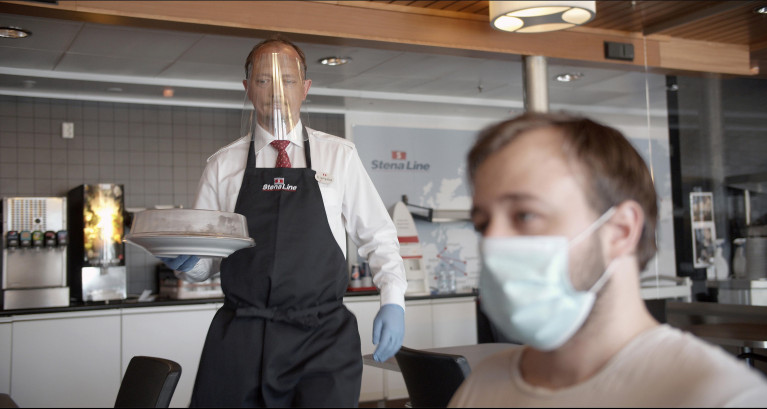A set of safety measures announced by Stena Line, given the potential easing of lockdown restrictions and the re-emergence of non-essential travel, is aimed at ensuring ferry travel is the safest form of public transport.
Social distancing, fog machines, fresh sea air inside the ships and the recommended wearing of face coverings, are all seen as key to reassuring customers about the future of ferry travel (see safety video) as countries reopen their borders in the coming weeks.
Stena Line’s ferries have played a vital role during the pandemic keeping supplies of food, medicines and equipment moving across Europe. As people look forward to being able to travel this summer, Stena Line has been receiving an increase in passenger bookings. In advance of the return of sea corridors reopening to tourist travel the company has been finalising extensive new safety measures to combat the spread of COVID-19 and ensure a safe and seamless journey:
- Easier social distancing - ferry travel is the only form of public transport where passengers can social distancing easily. Stena Line has undertaken risk assessments, which have capped the numbers of passengers on each crossing to guarantee adequate space.
- Fresh sea air is now being circulated into the air filtration systems on all ferries.
- New fog machines are being used to sanitise communal areas and cabins on the ferries and alongside the continuous cleaning routines being undertaken throughout the ships.
- From today, Monday 15th June, face coverings are recommended for all passengers and crew on Stena Line vessels, and in terminals, on all routes on the Irish Sea and the North Sea, where social distancing is difficult to achieve, such as in stairwells, lifts and in corridors.
“Ferry travel is the only mode of transport where you can social distance, so it is no surprise that we are now seeing an increase in bookings due to the expected reduction in lockdown restrictions. In advance of the return of international travel we now feel the time is right to tell people about our new anti-COVID-19 measures and reassure them that ferries provide the safest mode of transport for travel passengers and freight drivers. The safety of our passengers and crew is always a top priority for Stena Line.” Says Stena Line’s CEO Niclas Mårtensson.
As part of Stena Line’s safety plan to prevent the spread of the Covid-19, an extensive risk assessment identified three key stages of the customer journey to focus on:
A. During check-in at the Terminal.
B. While onboard the vessels.
C. During embarkation and disembarkation
“By providing the ability to social distance the whole journey, our big, bright and spacious ferries have plenty of fresh sea air, both inside and out, and offer the safest way to travel for people who want to take a break after the long lockdown” says Niclas Mårtensson, CEO of Stena Line.































































